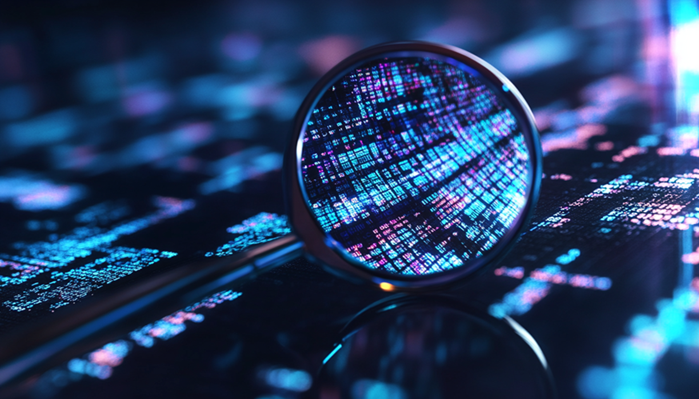Digital forensics is a crucial field that involves the investigation and recovery of data from digital devices, such as computers, smartphones, and other electronic storage media. This discipline plays a significant role in criminal investigations, cybersecurity, and corporate security, helping to uncover evidence, understand cyber incidents, and prevent future threats. In this post, we’ll explore the fundamental steps involved in digital forensics, the tools used by professionals, and how these tools contribute to a thorough investigation.
Step 1: Securing the Evidence
The first critical step in digital forensics is securing the evidence. The forensics team meticulously bags the laptop, ensuring its integrity and establishing a chain of custody. This process prevents tampering and maintains a detailed log of how the evidence is handled, crucial for its admissibility in court.
Step 2: Preliminary Assessment
Once the evidence is secured, it’s transported to a secure lab for a preliminary assessment. The investigators document the laptop’s condition and plan their forensic examination accordingly. If the laptop is switched on and encrypted, tools like Volatility are used for live memory forensics to extract decryption keys from the RAM. If the laptop is off, forensic imaging tools like FTK Imager create a bit-by-bit copy of the hard drive, a crucial step before attempting to bypass encryption.
Step 3: Access and Decryption
Gaining access to the data often involves bypassing various security measures. If the laptop is locked with a BIOS password, hardware-level techniques, such as removing the CMOS battery or obtaining a master password from the manufacturer, may be employed. Once access is gained, decryption tools are used to unlock the data, setting the stage for a thorough investigation.
Step 4: File System Analysis
With access to the laptop’s data, investigators use tools like SleuthKit to analyze the file system, searching for hidden or deleted files. Data recovery tools, such as EaseUS Data Recovery, come into play here, capable of retrieving lost or deleted files from various storage devices, even those thought lost. These tools are invaluable for uncovering crucial information and tracing the criminal’s activities.
Step 5: Metadata and Log Analysis
Extracting metadata from files, especially images, provides valuable insights. Investigators can discover when and where photos were taken, what devices were used, and if any editing software was applied. To delve deeper, tools like LogParser and Splunk analyze log files to uncover system activities, while RegRipper focuses on registry forensics, revealing login times, network connections, and system modifications.
Step 6: Online Behavior and External Devices
For tracking online behavior, tools like History Examiner and MailXaminer analyze browser history and emails. This helps identify potential co-conspirators or hidden plans. Additionally, tools like USBDeview can list all external devices connected to the laptop, providing details like device names and connection times, crucial for tracking data movement.
Final Steps: Reporting and Beyond
After a comprehensive analysis, the findings are compiled into a detailed report. This report includes a timeline of events, linking various pieces of evidence to create a cohesive narrative. This documentation is essential for presenting the case to law enforcement or in court.
Beyond Laptops: Other Devices and Roles
Digital forensics isn’t limited to laptops. Smartphones, cameras, drones, and smartwatches also come under scrutiny, each with its specific forensic tools and methods. Moreover, forensic investigators often work with private companies, analyzing systems post-cyberattack to understand breaches and prevent future incidents, a field known as DFIR (Digital Forensics and Incident Response) or threat intelligence.
Digital forensics is a vital component of modern investigations, whether for solving crimes or protecting against cyber threats. The meticulous work of forensic experts ensures that no digital stone is left unturned, providing crucial insights that can make or break a case. Whether you’re interested in law enforcement, cybersecurity, or simply fascinated by the intersection of technology and investigation, digital forensics offers a rich and rewarding field to explore.
Tools and Software Used in Digital Forensics
Volatility
- Description: A powerful open-source memory forensics framework that helps extract and analyze volatile memory data from systems.
- Website: Volatility Foundation
FTK Imager
- Description: A forensic imaging tool used to create exact copies of data from hard drives and other storage devices for analysis.
- Website: AccessData FTK Imager
SleuthKit
- Description: A collection of command-line tools and libraries that analyze disk images and recover data from them.
- Website: SleuthKit
EaseUS Data Recovery
- Description: A user-friendly data recovery software designed to recover lost or deleted files from various storage devices.
- Website: EaseUS
LogParser
- Description: A versatile tool for parsing log files and analyzing structured data.
- Website: Microsoft LogParser
Splunk
- Description: A platform for searching, monitoring, and analyzing machine-generated big data via a web-style interface.
- Website: Splunk
RegRipper
- Description: A tool for extracting, analyzing, and reporting on the contents of the Windows Registry.
- Website: RegRipper
History Examiner
- Description: A tool for examining and analyzing the history stored by web browsers.
- Website: History Examiner
MailXaminer
- Description: An email forensics tool that helps investigators analyze and manage email data efficiently.
- Website: MailXaminer
USBDeview
- Description: A small utility that lists all USB devices that are currently connected or were previously connected to a computer.
- Website: USBDeview
sources: @an0n_ali
